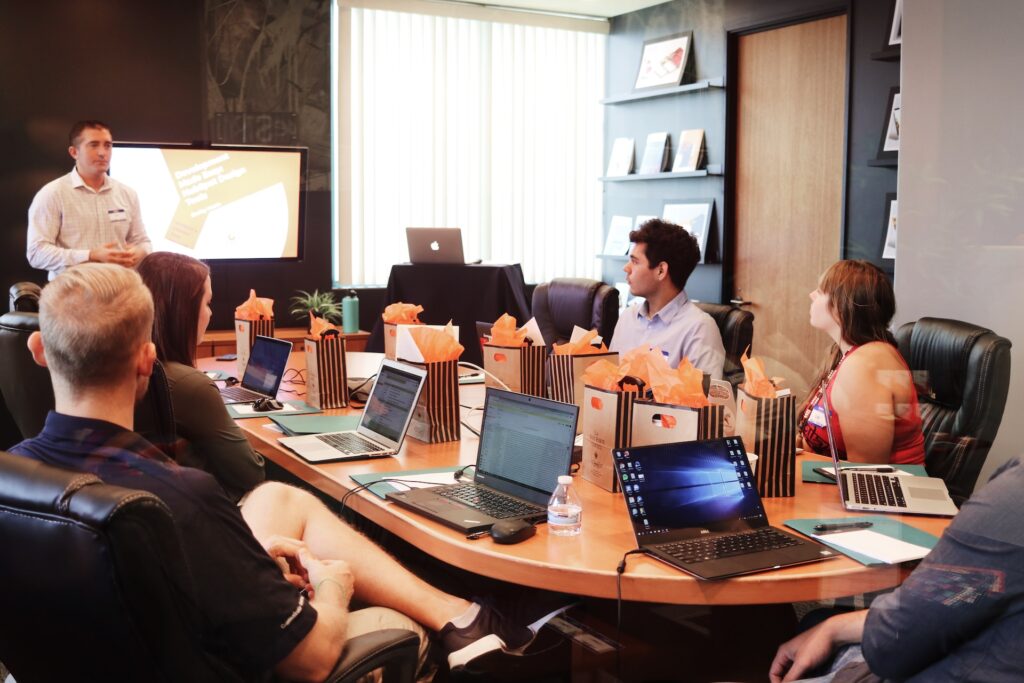Recruiting top talent is only the first step toward creating a workforce that drives business growth. Employees want to know that their company values them and is invested in their future. This might mean helping individuals address skill gaps so they can progress along their career trajectory, or offering skills sessions that benefit whole teams. Upskilling and reskilling are vital aspects of employee development, but could also boost a firm’s bottom line and increase its reputation in the marketplace.
Benefits of Skills Training
Skills shortages are one of the primary recruiting challenges for HR teams. In fact, 83% of HR personnel have reported recruitment challenges due to a lack of specific skills in applicants. Senior technical roles, for example, are particularly hard to fill. A combination of the “Great Resignation” plus highly skilled employees retiring or changing career paths means that many skills pools are evaporating. However, savvy businesses can address this concern by introducing skills courses in the workplace.
These can take many forms, from formal, classroom training to peer-to-peer mentorship. Computer-based training (CBT) is very popular, as are smartphone apps. Investing employee development brings multiple benefits to businesses, including:
- Better employee engagement
- Potential for increased productivity
- Reduced employee churn/turnover
- Higher levels of job satisfaction and employee loyalty
- Increased company reputation
- Improved recruiting practices
This last point is vital: When you retain your current staff and visibly invest in them, you attract top talent to consider you as their next opportunity. You can also cite upskilling or reskilling courses as a benefit when you advertise to job seekers.
Identifying Skill Gaps
Now you know how important upskilling and reskilling is, how do you know which skills to focus on? The first place to find this information is, unsurprisingly, from your employees themselves. Use surveys or meetings to gain regular feedback on skills they would personally find useful in their roles.
You can also run skills assessments—periodic tests of particular skills to understand which workers are up to standard and which require upskilling sessions.
Your departmental KPI scores should also help you understand where skills gaps exist. If you have a team that’s constantly underperforming in customer satisfaction, could they benefit from some “soft skills” training? Gaining a holistic overview of your organization and its workforce helps you stay abreast of skills gaps and training requirements.
Designing Effective Training Programs
These requirements must feed directly into upskilling and reskilling programs with genuine impact. Steps you might need to take could include:
- Recruiting training specialists
- Investing in a learning management system (LMS)
- Considering other ways to diversify training, e.g., apps and peer-to-peer programs
- Assessing time commitments of employees—training shouldn’t cause workers to fall behind in their daily workload
- Gaining feedback on training to ensure continuous improvement and engagement
Everyone learns in different ways, so designing an effective training program means considering the needs of every learner. This includes making learning accessible for those with sight or hearing impairments, or autistic learners who may benefit from one-to-one time rather than group sessions. Remember to ask employees what their needs are rather than making assumptions.
Encouraging Continuous Learning
Of course, workers won’t become fully engaged in training and upskilling initiatives unless they understand the benefits. Ensure employees know why they’re being offered training, and what the outcomes could be. Share stories of individuals who’ve attended courses and gone on to gain promotions or got the opportunity to work on prestigious projects.
“Lifelong Learning” is the concept that a learner mindset helps individuals continuously learn and upskill themselves throughout their lives. Employers can encourage this by incentivizing attendance at training courses, offering promotions that require specific skills, and rewarding mentors who successfully upskill others.
Measuring Impact
It’s tricky to gain your CFO’s support for continuous training initiatives if you can’t demonstrate their success. That’s why it’s imperative that you find ways to measure the impact of your upskilling or reskilling programs, and create compelling reports that clearly show the benefits of continuing these schemes.
Your LMS should keep a record of who has learned what, and which courses individuals/teams have completed. You can tie this data to KPIs, looking at performance increases in employees who’ve engaged in skills sessions. You should also be able to clearly see a reduction in employee churn from the time you established upskilling initiatives in the workplace.
Takeaway: Beat Skills Shortages with Internal Upskilling Initiatives
Forbes recently reported that 41% of employees might leave their jobs in 2024 if employers fail to offer relevant skills training. This makes companies who invest in employee development ideally placed to sweep up top talent and beat the skills shortages.
If your firm needs more support with recruiting and retaining highly skilled workers, speak to the team here at MRINetwork for more information.

Connect with MRINetwork